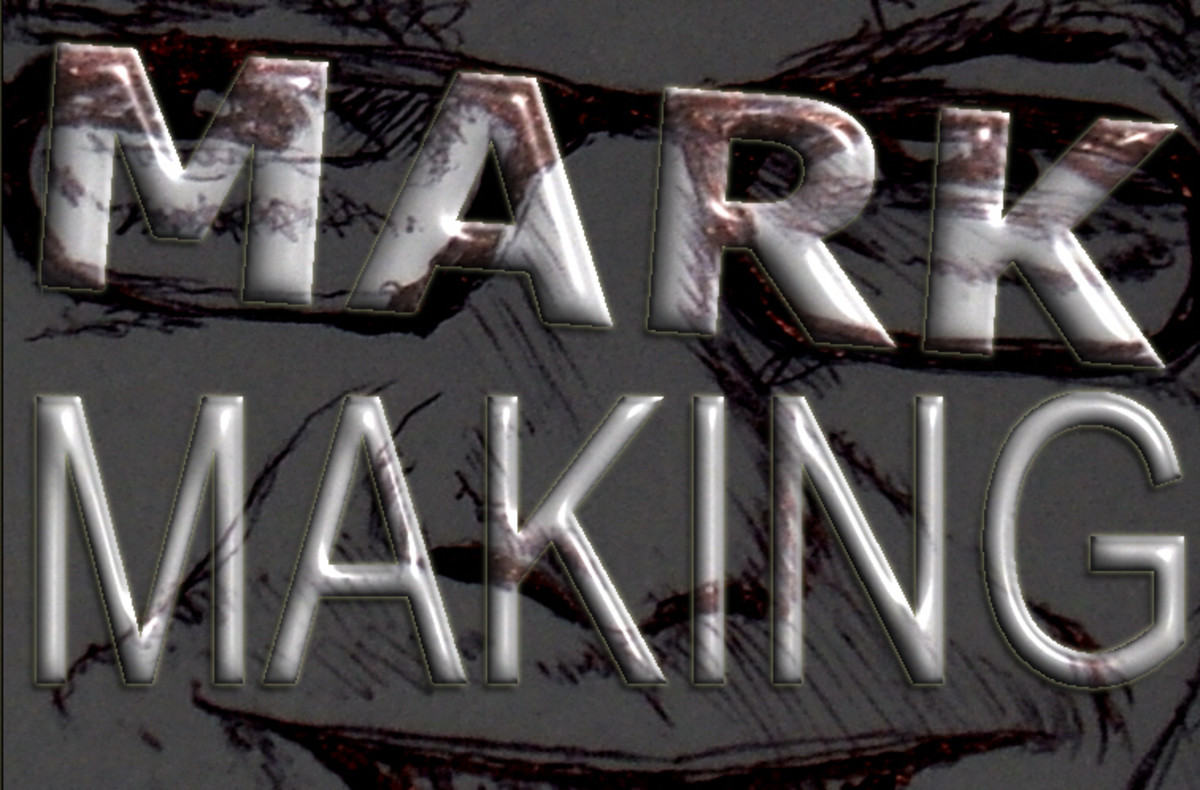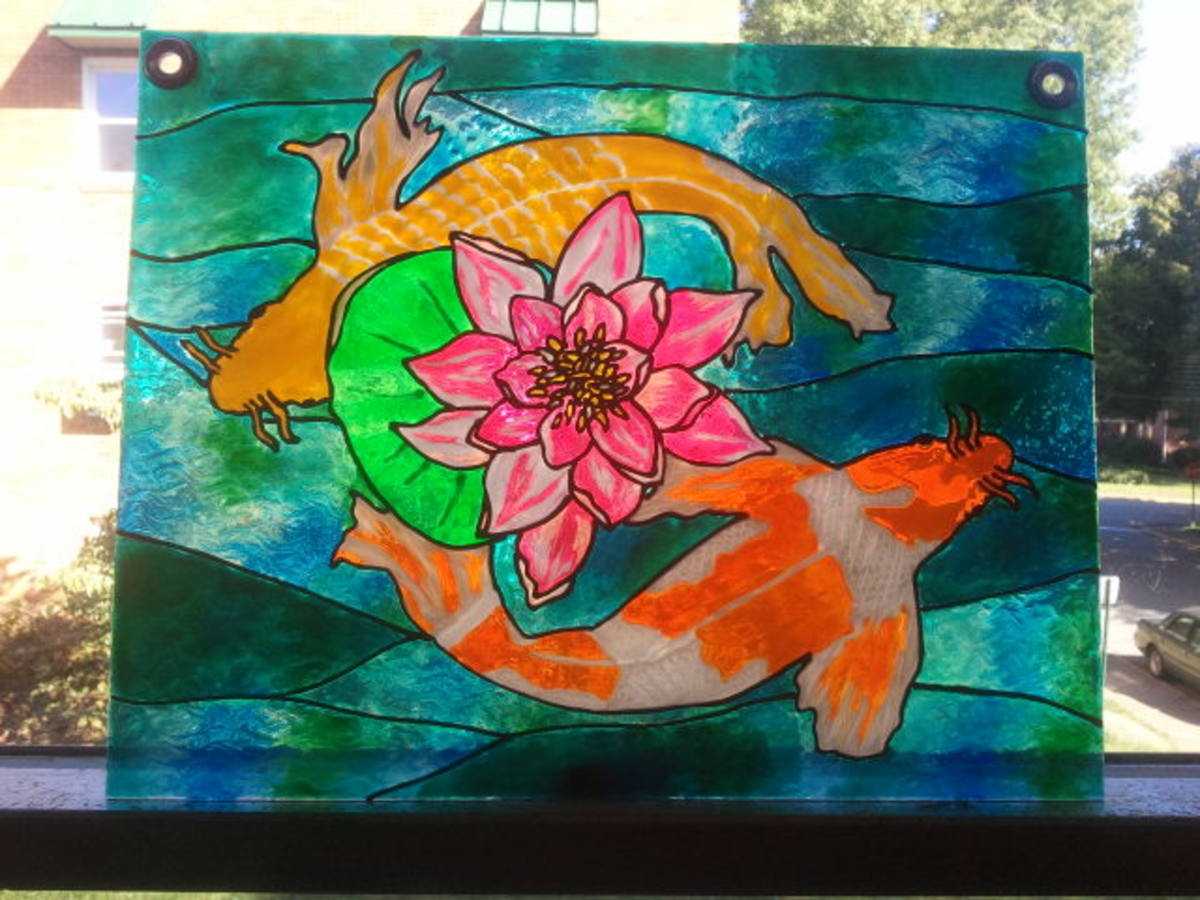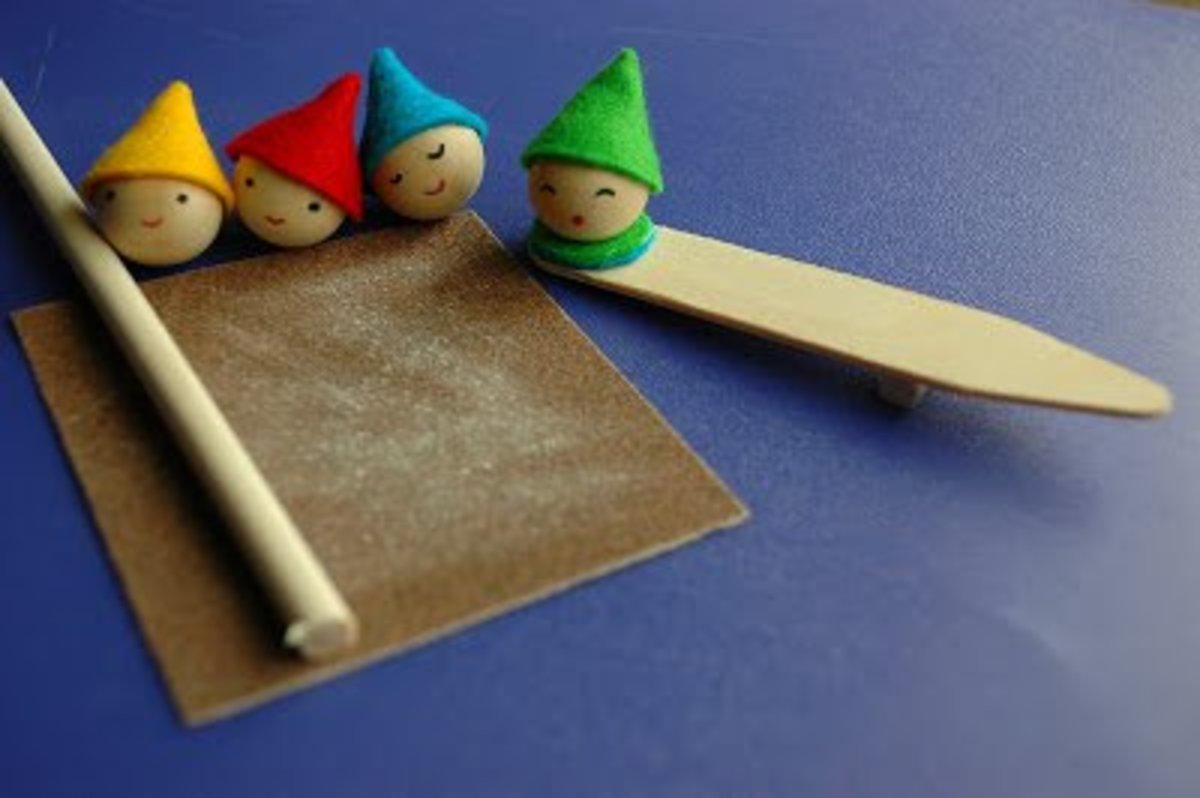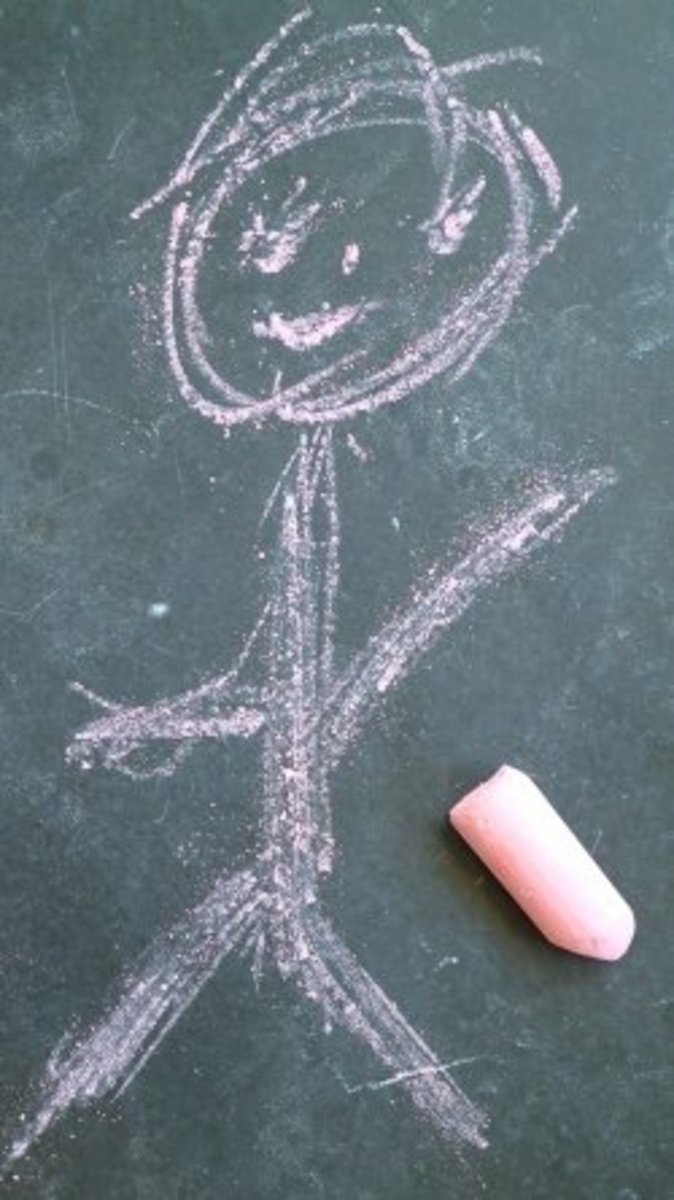Harmonia: Greek Legend and the Techniques of Lichtenstein
Harmonia's Gown and Necklace
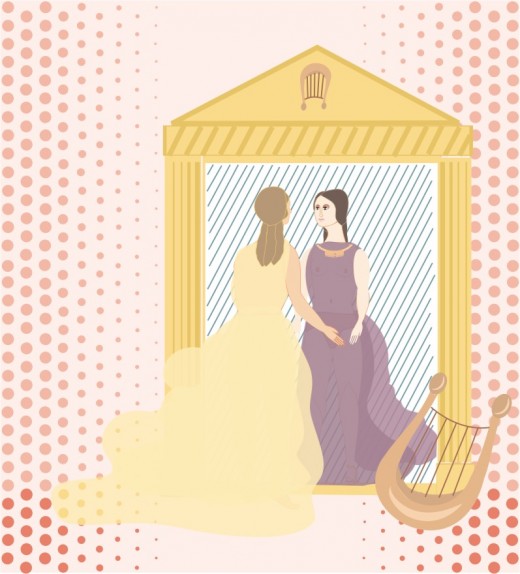
The Legend of Harmonia
In ancient Greece, the name Harmonia was applied to the concept of harmony and concord. In the Theban tradition, Harmonia was the daughter of Ares and Aphrodite, while in the Samothracian tradition, she was the daughter of Zeus and Electra. In both traditions, Zeus married her to Cadmus, and the gods who attended the wedding brought gifts that included a robe woven by the three Charites or Graces, but was actually a gift from Ares and Aphrodite. They also brought a necklace made by Hephaestus, the god of fire, metals and metallurgy, incidentally the same god who fashioned mortal Pandora out of clay. Whichever version of the story you prefer, the gown and necklace go on to play starring roles in other Greek adventures.
The items eventually passed to Polynices, son of Oedipus, who ruled Thebes, along with his brother, Eteocles. The power-hungry brother eventually deposed Polynices. He fled to Argos and took refuge in the palace of Adrastus and eventually married Argia, the daughter of Adrastus. However, Polynices wanted his kingdom back. He gave the gown and necklace to Eriphyle, the wife of soothsayer, Amphiarus, so that she would persuade her husband to influence her husband in going to war against the Thebans. Adrastus eventually agreed, on condition that the son of Amphiarus and Eriphyle, Alcmaeon, would lead a legion of Epignoni against the Thebans. Alcmaeon did as he was bid, but when he returned from Thebes, Eriphyle was dead and he gained possession of the gown and necklace, himself. He gave the items as a gift to his first wife, Arsinoe. Later on he married Callhiroe, daughter of river god Achelous, and tried to steal them back from Arsinoe. Her father, Phegeus, punished Alcmaeon. After many more adventures, the gown and necklace were dedicated to Apollo at Delphi.
Flat harmony....
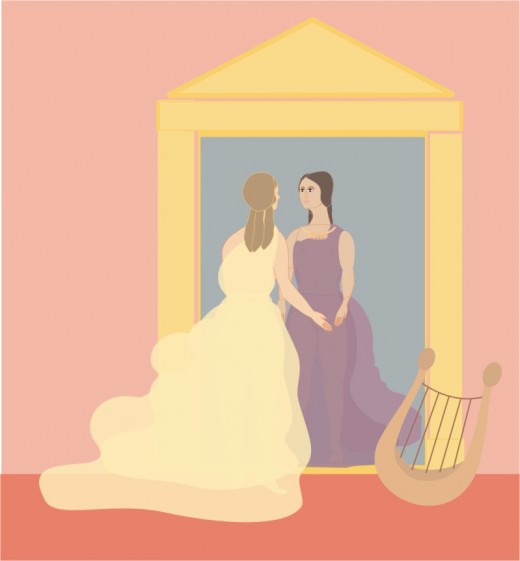
The First Attempt
With such a lot of colourful stories, my thoughts turned to what the gown and necklace must have looked like, thoughts that eventually found their way to my drawing board. The gown must have been quite beautiful to inspire all that in-fighting so I decided on a diaphanous creation in lemon tissue. To complete the picture, I chose an array of “warm” colours to try to engender the atmosphere of the ancient, Mediterranean culture. The wall is pink, while the floor is brick-red and the frame of the mirror is gold. To give Harmonia’s reflection a misty, other-wordly feel, I recreated her alter ego in cooler tones. In the reflection, her brown hair becomes black and her lemon gown turns mauve. To emphasise the magic nature of the necklace (and because it is hidden from view on the “real” Harmonia”) I left it glowing and golden on the reflected image.
I drew Harmonia standing in front of the mirror, with her back towards us and her front reflection visible, an old artistic device to display two views of a subject. I made her hairstyle vaguely Greek and with the same aim in mind, I placed a pediment on top of the mirror and put a pillar on both sides of the mirror. I added a lyre to the foot of the mirror, both to complete the image and to allegorise the name of the subject. The lyre is a stringed instrument, like a small harp. It has been depicted in Greek art as early as 500 BC and from it, we derive our word, lyrical. As with all first efforts, however, the image looked flat and did not have the impact that I wanted.
The necklace....
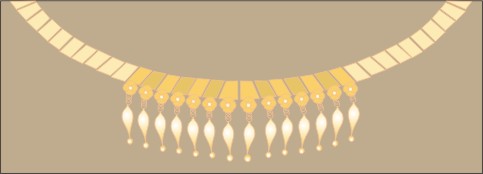
The Necklace
The necklace that Harmonia is wearing is a Greek design, elaborate metalwork strung from a silken cord, with no incorporated precious or semiprecious stones. The image was not too difficult to create on Corel drawing software, consisting mainly of the repetition of basic shapes. I used Trumatch shade 9-E for the cord, outlined in 8-E, with Trumatch shades 9-A and 9-A1 for the golden hasps. I made the florets by repeating a petal shape four times, and placing a gold bead in the centre. I added a radial shine effect to the beads and droplets, to add depth.
The Mirror
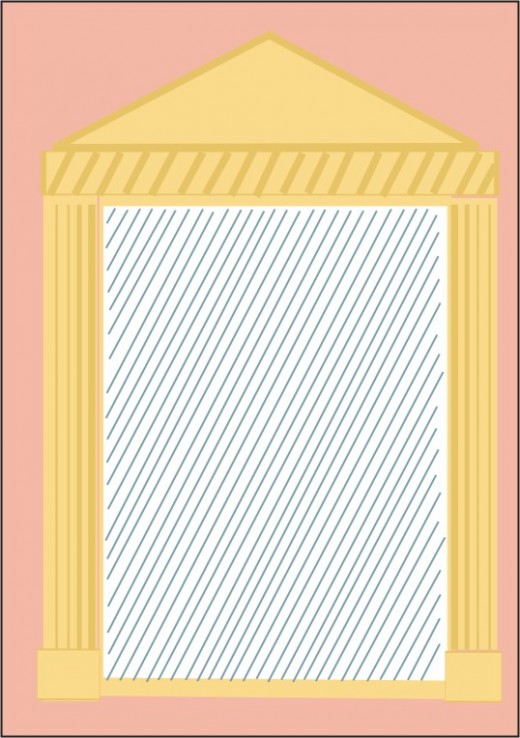
Lichtenstein again.
As in previous exercises, I turned to the creative practices of Roy Lichtenstein for help. First, I needed to bring the mirror to life. Taking inspiration from posters like Girl with Tear III, I improved the pillars by adding vertical lines to create the characteristic flutings of classical columns. Make the flutings with whatever rectangle-drawing tool is available to you, not actual lines. You are about to create a series of nuanced vertical grooves, decreasing (or increasing) very gradually in size. It is far easier to do this with a rectangle-drawing tool than using pre-existing lines. Draw a series of tall, very thin boxes free of any outlines, and fill them with a darker shade than is on the actual pillar. At this point, I discovered that Trumatch 9-A1 was far more effective in creating the illusion of gold, than my original Trumatch 9-A, so I changed all the outlines around the mirror to Trumatch 9-A1. I was nearly there, but still wasn’t satisfied. It then occurred to me that the frieze above the mirror glass was wasted space, so I filled it with the famous Lichtenstein hatchings – see my instructions for making these in Draw Like Lichtenstein: Colour and Perspective. I was so delighted with the effect that I decided to “dissolve” the surface of the mirror with fine hatchings.
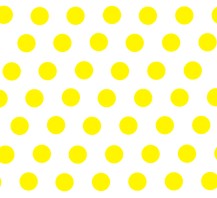
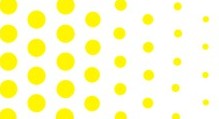
Ben Day dots
In my feature, Draw Like Lichtenstein, I described how to make the famous “Ben Day” dot shading used by the artist in many of his images, with computer drawing software. For Harmonia, I decided to use the shading but with a difference. In the majority of his images, Lichtenstein uses a matrix of identical polka dots on a grid of 60 degrees. In other images, he graduates the size of the dots so that each vertical row is successively smaller and from a distance, the dots look like finely-nuanced shading. Making this kind of dot shading is not too difficult. Start a new row of dots by reducing an original dot slightly in size. Use the drawing board guidelines you laid down in one of the earlier acts of creation, copy and paste the dot downwards to create a new row, taking care that it falls exactly midway between the larger dots in the adjacent line. Repeat until you have created a new line. Then, reduce the dot again and repeat the process to create a line of smaller dots. This process is tricky and does require much concentration, a keen eye and sleight of hand. However, the reward is an array of graduated polka dots that you can store in your file of created patterns and use in images, again and again.
Subtle shadings...

Subtle Shadings
Placing the shadings was more a conundrum. However, I decided that the light would fall in the centre of the room, which would have the effect of “washing out” the pink and red of floor and tile. In the end, I decided to leave the background a pale pink, actually Trumatch 6-H, and place a gradation of dots on either side of the room, on both wall and floor. One advantage of this method is that the pink of the walls blends gradually into the red of the floor, the way colours seem to “bleed” into each other in hot and bright surroundings. As final touches to the image, I made the reflected Harmonia’s skin pale and ghostly. I pulled up the neck of her dress so that the necklace would stand in relief against it. Last of all, I copied and pasted a miniaturized lyre to the pediment of the mirror.
At the end of their lives, Harmonia and Cadmus abandoned the throne of Thebes, and went to llyria where they were transformed into snakes. I haven’t yet created fantastical animals using this method, but that is my next learning experience.
Sources
Lichtenstein Posters by Jurgen Doring and Claus von der Osten, Prestel Publishing
Dictionary of Classical Mythology, edited by Pierre Grimal, Penguin Books.

